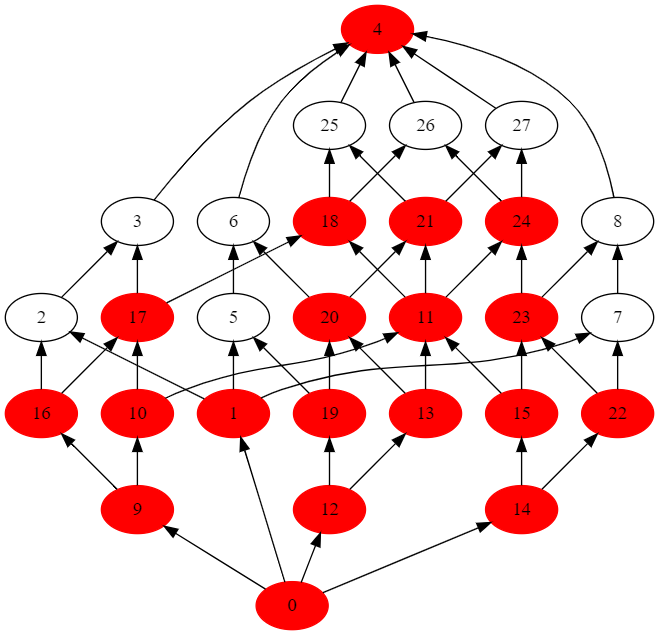I know that it is possible to represent every finite lattice $L$ with a union-closed family $\mathcal{F}$ containing the empty set: for every $x\in L$, let $S_x=\{y\in L\, :\, y\not\geq x\}$ and $\mathcal{F} = \{S_x :\, x\in L\}$ (see this question).
However, the number of elements in the universe $|U(\mathcal{F})| =|L|$ is not necessarily minimal: we can remove some of them and still have a family representing the lattice.
Here are a few examples where the removed (not needed) elements are depicted in red:
The powerset:
I have done the above with a program that tries to remove one element at a time. It seems that the result does not depend on the order of tries.
Is it possible to identify systematically the elements that are not removed and/or determine or estimate the minimum number of elements needed for a given lattice based on some structure of it?
Maybe the only needed elements are those with out-degree exactly $1$?
EDIT: the following further examples seem to support the above hypothesis:







